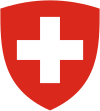| This article is part of a series on the |
 |
|---|
|
|
| Part of the Politics series |
| Direct democracy |
|---|
 |
|
|
Voting in Switzerland (called votation) is the process by which Swiss citizens make decisions about governance and elect officials. The history of voting rights in Switzerland mirrors the complexity of the nation itself. The polling stations are opened on Saturdays and Sunday mornings but most[1] people vote by post in advance. At noon on Sunday (Abstimmungssonntag in German, Dimanche de votation in French), voting ends and the results are usually known during the afternoon.
Switzerland's voting system is unique among modern democratic nations in that Switzerland practises direct democracy in parallel with representative democracy, which is why the Swiss system is known as a semi-direct democracy.[2] Direct democracy allows any citizen to challenge any law approved by the parliament or, at any time, propose a modification of the federal Constitution. In addition, in most cantons all votes are cast using paper ballots that are manually counted. At the federal level, voting can be organised for:
- Elections (election of the Federal Assembly)
- Mandatory referendums (votation on a modification of the constitution made by the Federal Assembly)
- Optional referendums (referendum on a law accepted by the Federal Assembly and, that collected 50,000 signatures of opponents)
- Federal popular initiatives (votation on a modification of the constitution made by citizens and that collected 100,000 signatures of supporters)
Approximately four times a year, voting occurs over various issues; these include both initiatives and referendums, where policies are directly voted on by people, and elections, where the populace votes for officials. Federal, cantonal and municipal issues are polled simultaneously, and a majority of votes are cast by mail. Between January 1995 and June 2005, Swiss citizens voted 31 times, to answer 103 federal questions, besides many more cantonal and municipal questions (during the same period, French citizens participated in only two referendums).[3]
The most frequent themes are social issues (e.g. welfare, healthcare, and drug policy), public infrastructure (e.g. public transport and construction projects) and environmental issues (e.g. environment and nature protection), economics, public finances (including taxes), immigration, asylum, and education, but also about culture and media, state system, foreign affairs, and military issues – again on any of the three political levels.[4]
Voter turnout in parliamentary elections saw a continuous decline since the 1970s, down to an all-time low of 42.2% in 1995.[5] In recent years however, voter participation has been slowly growing again and was at 48.5% in 2011.[5]
The average turnout for referendums was at 49.2% in 2011.[6] Federal popular initiatives of little public appeal sometimes cause participation of less than 30% of the electorate, but controversial issues such as a proposed abolition of the Swiss army or a possible accession of Switzerland into the European Union have seen turnouts over 60%.[7][8][9]
- ^ Cite error: The named reference
Wellig 2015was invoked but never defined (see the help page). - ^ Cormon (2015), p. 22.
- ^ Vincent Golay and Mix et Remix, Swiss political institutions, Éditions loisirs et pédagogie, 2008. ISBN 978-2-606-01295-3.
- ^ "Themen der eidgenössischen Volksabstimmungen" (XSL) (official site). Neuchâtel, Switzerland: Federal Statistical Office FSO. 31 December 2018. Retrieved 28 April 2019.
- ^ a b "Statistik Schweiz - Wahlbeteiligung". Archived from the original on 16 November 2012. Retrieved 8 November 2012.
- ^ "Statistik Schweiz - Stimmbeteiligung". Archived from the original on 10 December 2008. Retrieved 19 July 2008.
- ^ "Votation results for Swiss army abolition, 64.4% No". Admin.ch.
- ^ "Votation for UE adhesion process in 1997 : 74.1% No". Admin.ch.
- ^ "Votation for UE adhesion process in 2001 : 76.8% No". Admin.ch.